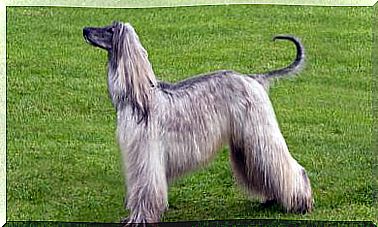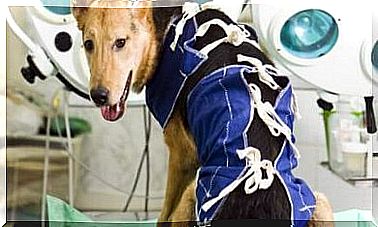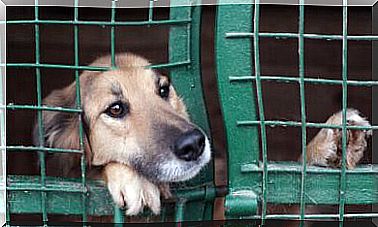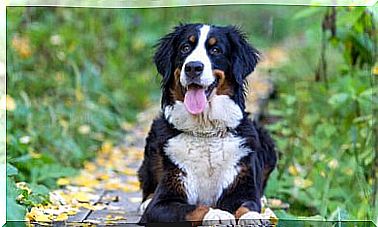The Role Of The Dog In Prehistory
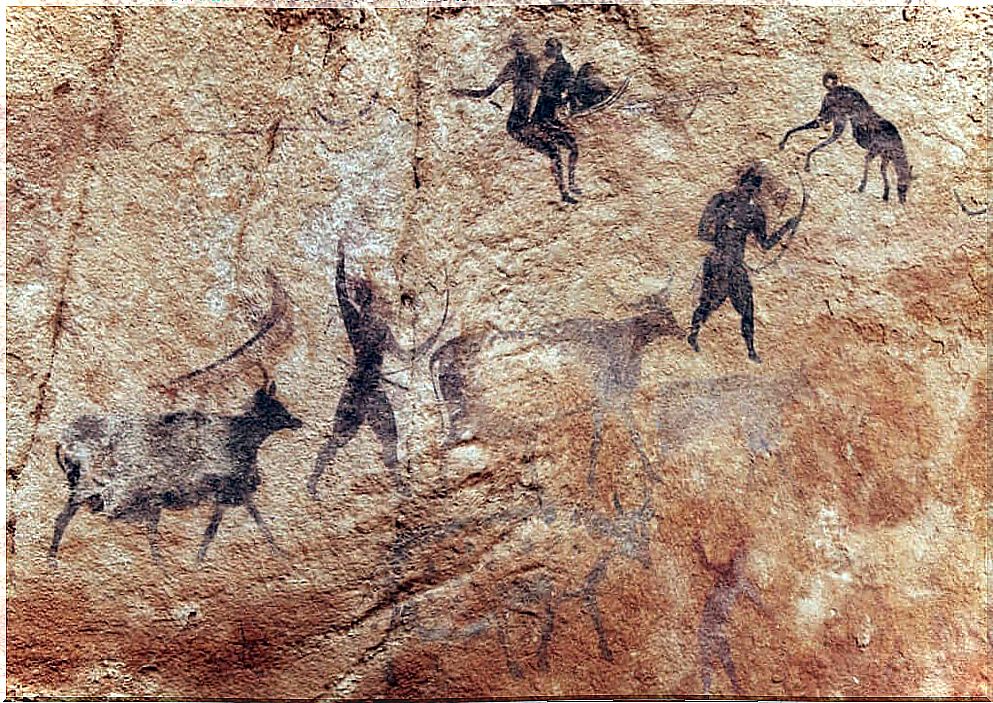
The dog has had a special role in human life, from prehistoric times to the present. Protective animal, shepherd, work and companionship: the dog has helped man since his origins.
Do you know when this ancient symbiosis started? Ever wondered what are the signs of coexistence between people and dogs? Here, we’ll provide answers to those questions and more.
Dogs helped humans hunt in prehistory
Cave paintings and fossil remains provide clues to archaeologists about what life was like for our ancestors. The first evidence of coexistence with dogs dates back to about 11,500 years, on the Asian continent.
Despite this, it is believed that the coexistence and domestication of the dog began much earlier. The introduction of dogs as hunting aids may explain the large increase in hares and other small prey in Neolithic archaeological remains.
A specific case is the Shubayqa 6 site in northeastern Jordan, as the bones found there showed signs of having passed through the digestive tract of an animal. Also, they were too big to be swallowed by humans, so they could have been digested by dogs that lived and ate alongside other people.
These dogs were not kept outside the prehistoric settlement as they were integrated into all aspects of daily life. This would explain the presence of their remains, the increase in small prey that helped them hunt, the food they digested and even fossilized feces in prehistoric human sites.
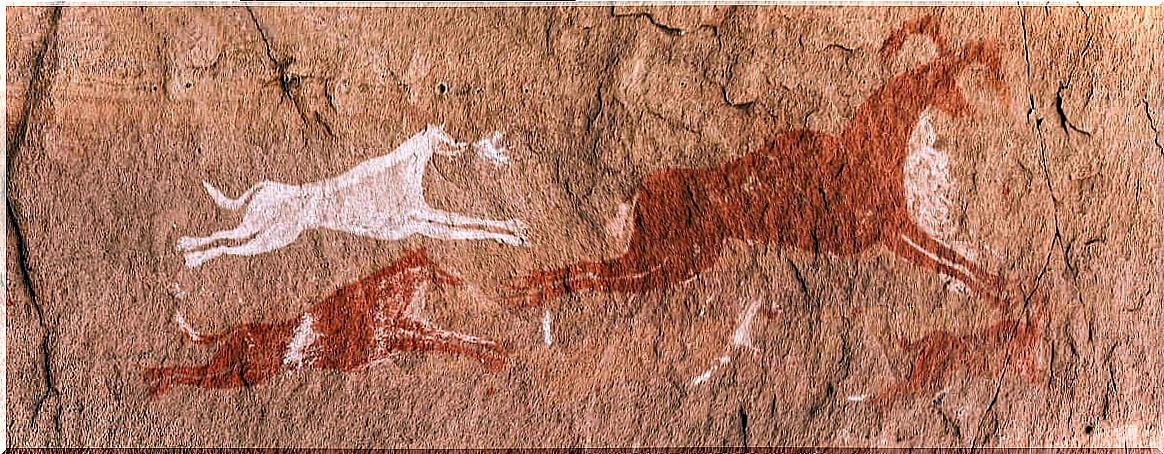
The dog in prehistory: cave paintings
In the Arabian Peninsula, we can also find evidence of hunting with dogs during prehistory. In these 8000-year-old cave paintings, the figure of a dog appears several times accompanying humans hunting gazelles, ibex and horses, or caring for livestock.
The most curious thing is that these dogs are even represented with collars around their necks and remind us of the cane-dogs. All dogs have erect ears, short snouts, a very angular chest, and a curled tail.
The friendship of man and dog in prehistory
Dogs were not just work animals, as archaeological remains suggest that as far back as prehistoric times there were emotional ties between dogs and humans. The Bonn-Oberkassel tomb, which dates back about 14,000 years, contained the skeletons of an older man and a younger woman, along with the incomplete remains of two dogs.
And it’s not just the fact of sharing a grave that catches the eye, as the teeth of one of the younger dogs indicate that he suffered from a distemper infection, which probably ended his life, but it seems that the disease took a long time. to get worse and so the dog would have survived longer than expected.
This fact makes researchers think that, instead of having been abandoned for not being able to work, the animal would have managed to survive longer thanks to the attention and care it received. Therefore, the relationship between dogs and humans did not seem to be just utilitarian, as both began to develop emotional and affective bonds.
Although dogs originated from the wolf, domestication and artificial selection made dogs very different from prehistoric dogs. In fact, dogs today are more closely related to each other than any of them are to wolves today.
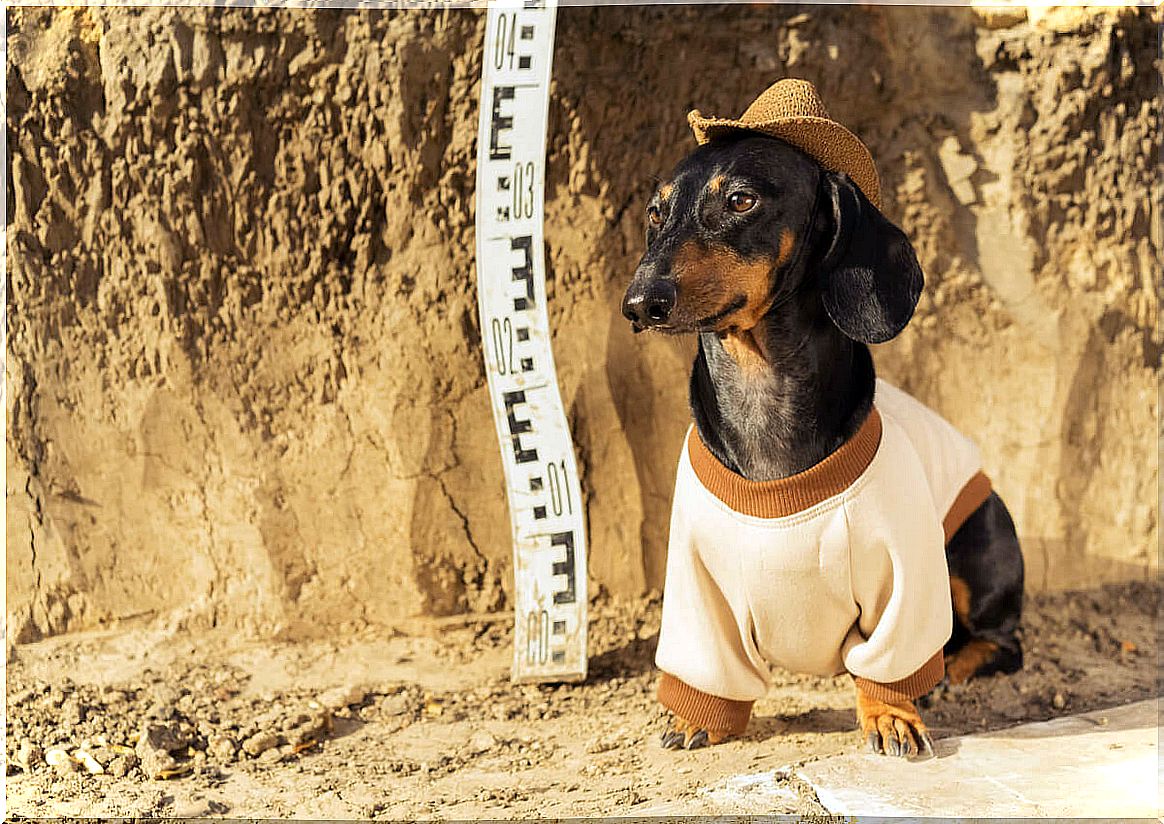
The retention of juvenile characteristics, the docility and social skills acquired after thousands of years with humans, has made dogs more and more attached to our species, although in their early role in prehistory they began as work animals.
An ancient symbiosis
Thus, each dog’s tutor has an evolutionary companion with him at home. Dogs have learned to interpret our language, to integrate into human societies for purposes far beyond utilitarianism, and even to save lives in many cases.
One thing becomes clear to us every time we look into the eyes of a dog: society as we know it today would not be the same if this species were not present in the world.
